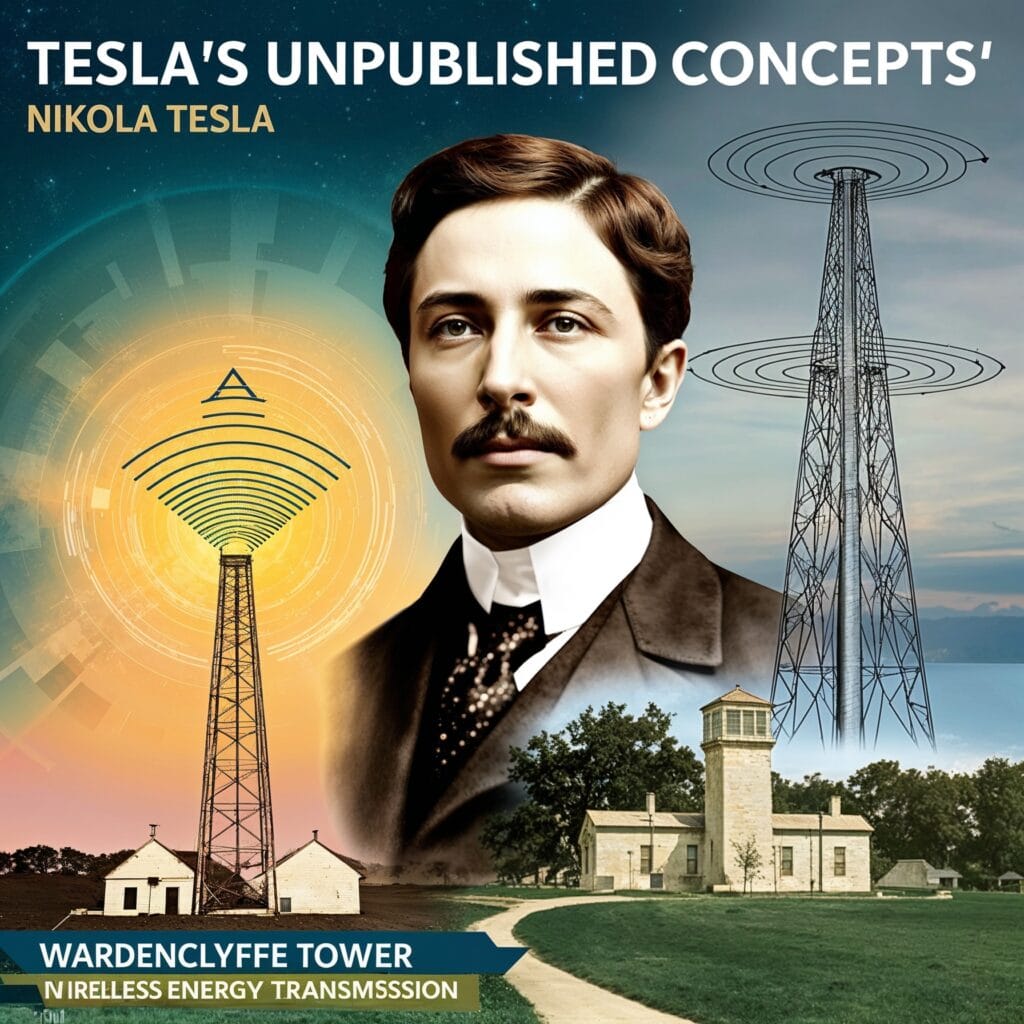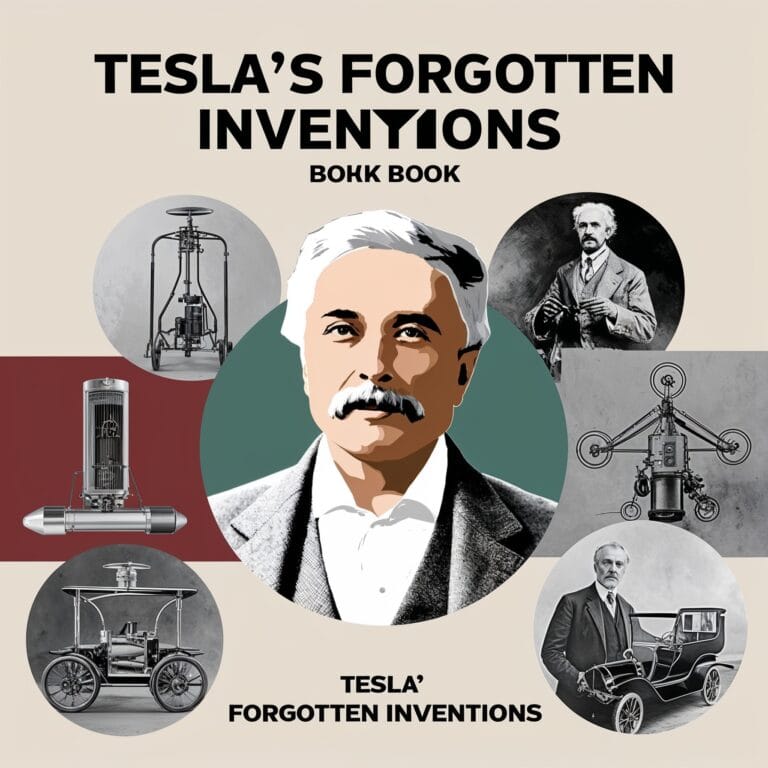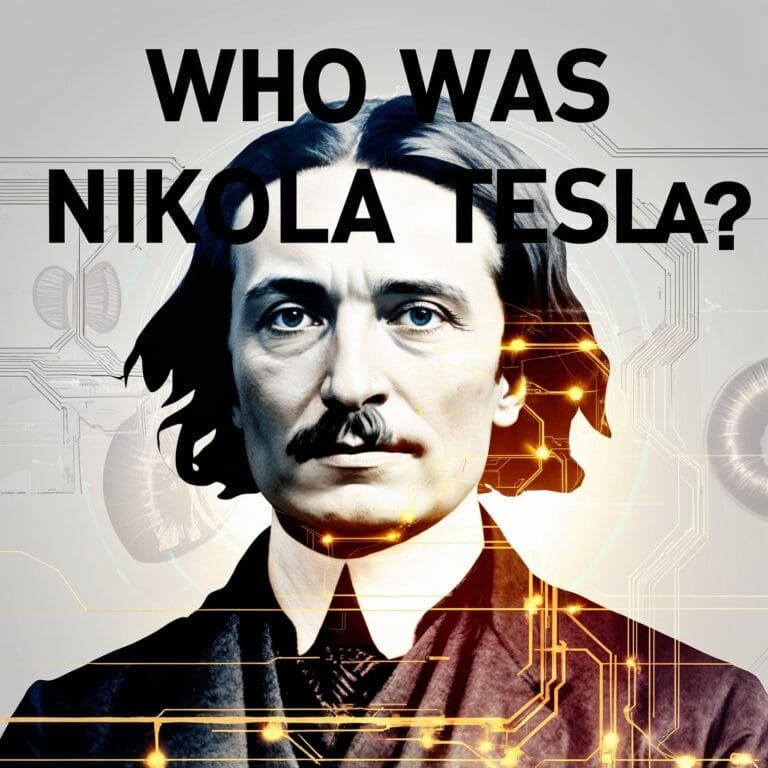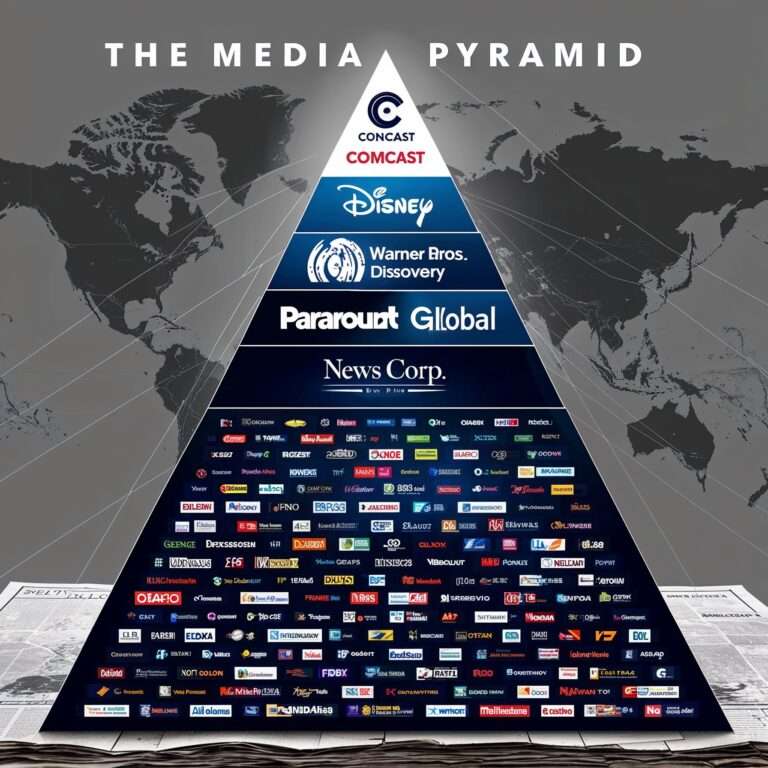
An artistic representation of Nikola Tesla’s visionary unpublished concepts and their modern relevance.
Nikola Tesla, often hailed as a genius ahead of his time, left behind a treasure trove of ideas and designs that required only the right technological or societal conditions to flourish. While his work with alternating current (AC) has been celebrated, Tesla’s lesser-known and unpublished concepts offer a glimpse into a mind far ahead of the technological capabilities of his era. These ideas, ranging from wireless energy transmission to brain-computer interfaces, were not simply speculative musings. They were meticulously crafted blueprints for a future that Tesla could envision but not realize.
Today, modern science has validated many of these ideas, and they have inspired technologies that power our current innovations. In this article, we dive deep into Tesla’s unpublished concepts, the reasons they remained unrealized during his time, and how they continue to shape cutting-edge research and applications.
1. Wireless Energy Transmission: The Modern Revival
Tesla’s Vision
Tesla’s vision for wireless energy wasn’t just about convenience; it was about universal access to power. He envisioned a world where energy flowed as freely as the air we breathe, empowering individuals and breaking down barriers created by centralized energy systems. His Wardenclyffe Tower, built in 1901, was not merely an experiment but a bold step toward creating an interconnected global network of energy. Tesla theorized that by harnessing the Earth’s natural resonant frequencies, energy could be transmitted wirelessly across continents without any loss of efficiency.
This idea wasn’t just futuristic; it was transformative. Tesla believed that such a system could eliminate the inefficiencies of traditional energy grids and end the monopolistic control of power distribution. This vision paralleled the modern internet—accessible, universal, and empowering for all.
How Far Did It Work?
At his Colorado Springs laboratory, Tesla conducted groundbreaking experiments that demonstrated the feasibility of his theories. Using his high-frequency transmitter, Tesla wirelessly lit incandescent lamps over a distance of 26 miles. This experiment not only validated the possibility of wireless energy transmission but also showcased the Earth’s potential as a massive conductor. However, Tesla’s tools and financial resources of the time limited his ability to scale this project.
Despite these constraints, Tesla’s work at Colorado Springs remains one of the most compelling pieces of evidence for the viability of wireless energy transmission, with modern technologies proving that his theories were not mere conjecture.
Why It Was Unpublished
Tesla’s wireless energy project was ahead of its time, but it clashed with the interests of powerful industrialists. J.P. Morgan, who initially funded the Wardenclyffe Tower, withdrew support upon realizing the system couldn’t be monetized using traditional billing models. This financial setback, combined with skepticism from the scientific community, relegated Tesla’s project to the status of a “failed experiment,” despite its groundbreaking potential.
Could It Work Today?
Modern advancements have reignited interest in Tesla’s vision, bringing us closer to making wireless energy transmission a reality:
- Wireless Charging: Technologies like Qi charging for smartphones and electric vehicles operate on the principles of resonant inductive coupling, a concept Tesla pioneered over a century ago.
- Power Beaming Satellites: Research initiatives, such as NASA’s space-based solar power projects, aim to transmit energy wirelessly from orbit to Earth, echoing Tesla’s global energy grid idea.
- Superconductors and Materials Science: Innovations in energy-efficient transmitters and superconducting materials have addressed the technical limitations Tesla faced, making wireless energy transmission more feasible and scalable.
Tesla’s dream of a global wireless energy grid is no longer confined to the realm of science fiction. Modern research has shown that not only is it possible, but it also has the potential to revolutionize how we distribute power, promoting sustainability and equity.
2. Robotics and Automation: The Machines of the Future
Tesla’s Vision
Long before the advent of artificial intelligence or autonomous vehicles, Tesla envisioned machines that could perform tasks independently, guided by wireless control. In 1898, he stunned audiences at Madison Square Garden by demonstrating a radio-controlled boat—a feat that earned him the title of the “Father of Robotics.” Tesla didn’t just see this as a novelty; he foresaw a future where autonomous machines could transform industries, performing dangerous, repetitive, or complex tasks with precision.
Tesla called this innovation “teleautomaton,” emphasizing its potential for remote control and autonomy. His vision extended beyond individual devices, imagining a world where fleets of machines worked together seamlessly to enhance human productivity.
How Well Did It Work?
Tesla’s demonstration was a resounding success. Using rudimentary radio waves, he controlled the boat with remarkable precision, showcasing the potential of wireless technology. This small-scale experiment laid the foundation for modern robotics, proving that machines could respond to wireless commands in real-time.
Despite its success, the concept was so far ahead of its time that it was often dismissed as a magic trick, with some speculating that Tesla had used telepathy rather than technology.
Why It Was Unpublished
Tesla’s radio-controlled boat remained a singular demonstration because the world lacked the infrastructure and understanding needed to support its widespread application. Additionally, industries were still reliant on manual labor, and there was little economic incentive to pursue automation on a large scale.
Could It Work Today?
Tesla’s pioneering work in wireless control has become the foundation of modern robotics:
- Drones and UAVs: Unmanned aerial vehicles, used for everything from military operations to package delivery, rely on principles Tesla introduced in his teleautomaton.
- Autonomous Vehicles: Tesla’s ideas about machines performing tasks independently have been realized in driverless cars, which combine sensors, AI, and wireless communication.
- Industrial Automation: Robotic arms and assembly line machines in manufacturing owe their existence to Tesla’s early vision of automation.
Today, automation is not just a possibility but a necessity in industries ranging from logistics to healthcare, underscoring the enduring relevance of Tesla’s work.
3. Thought Projection: Tesla’s Concept of the Mind Machine
Tesla’s Vision
Tesla’s idea of a Thought Camera was both revolutionary and haunting. He theorized that the brain’s electrical activity could be detected and translated into images, allowing thoughts to be visualized. Tesla’s hypothesis was based on his understanding of electrical energy and its role in biological systems. He imagined a future where this technology could enable unprecedented communication and self-expression, breaking the barriers of language and privacy.
How Well Did It Work?
Tesla lacked the tools to test this concept, so it remained theoretical. However, his understanding of neural impulses and their electrical nature foreshadowed the developments in modern neuroscience.
Why It Was Unpublished
The idea was too advanced for Tesla’s contemporaries to grasp. Without the computational power or imaging tools needed to explore neural activity, the Thought Camera was dismissed as speculative.
Could It Work Today?
Tesla’s concept is becoming a reality through:
- Brain-Computer Interfaces (BCIs): Companies like Neuralink are developing technologies that decode neural activity, enabling direct communication between the brain and machines.
- AI Neural Imaging: AI-powered models can now reconstruct visual data from brain scans, aligning with Tesla’s vision of thought projection.
- Neuroprosthetics: Devices that restore sensory functions echo Tesla’s belief in the practical applications of neural activity mapping.
Tesla’s Thought Camera represents the intersection of neuroscience and technology, a field that continues to grow with each breakthrough.
4. Scalar Energy and Resonance-Based Power
Tesla’s Vision
Nikola Tesla was deeply intrigued by the concept of scalar waves, a form of non-electromagnetic energy that he believed had the potential to revolutionize power transmission. Tesla theorized that scalar waves could transmit energy across vast distances with little to no loss, bypassing the limitations of conventional electromagnetic waves. By harnessing resonance—the natural vibration frequency of objects and systems—Tesla envisioned a future where power could flow wirelessly and seamlessly to any location on Earth.
This ambitious idea was not simply about convenience; Tesla saw it as a way to democratize energy access. He imagined a world where energy was no longer confined by grids or wires but was freely available to anyone, anywhere, regardless of economic status or geographical barriers.
How Well Did It Work?
Tesla conducted a series of groundbreaking experiments to explore the possibilities of resonance and scalar energy. Using high-frequency oscillators and other equipment, he achieved promising results in transmitting energy wirelessly over short distances. At his Colorado Springs laboratory, Tesla was able to light bulbs remotely, demonstrating the potential for large-scale energy transfer.
However, Tesla lacked the tools to conclusively prove the existence of scalar waves or harness their full potential. While his experiments hinted at extraordinary possibilities, they remained inconclusive due to the technological and scientific limitations of his time.
Why It Was Unpublished
Scalar waves were a concept far ahead of their time and poorly understood by Tesla’s contemporaries. The scientific community largely dismissed his theories as speculative, and Tesla’s inability to provide experimental proof further contributed to skepticism. Without institutional backing or financial support, Tesla could not advance his research to the point of publication.
Could It Work Today?
Scalar energy remains a controversial topic, but modern science continues to explore similar phenomena that align with Tesla’s theories:
- Quantum Energy Fields: Advances in quantum mechanics have led to the exploration of energy fields that resemble scalar wave theories. While not yet fully understood, these fields are being investigated for potential applications in energy transfer.
- Resonant Power Transfer: Modern wireless energy advancements, such as resonant inductive coupling, echo Tesla’s focus on resonance as a key principle for efficient energy transmission.
- Experimental Success: Some fringe scientific experiments have demonstrated intriguing results using resonance-based systems, though mainstream validation remains elusive.
While scalar energy is not yet a mainstream scientific reality, it continues to inspire research in alternative energy systems and wireless power transfer.
5. Earth Resonance and Weather Control
Tesla’s Vision
Tesla believed that the Earth itself was a vast, untapped source of energy that could be harnessed for a variety of purposes, including weather control. By tapping into the Earth’s natural resonance, Tesla theorized that it was possible to influence atmospheric energy and even manipulate weather patterns. His experiments with artificial lightning, using the Tesla Coil, aimed to demonstrate the power of resonant frequencies to control and direct massive amounts of energy.
Tesla’s vision was bold and far-reaching. He imagined a future where droughts could be ended by inducing rainfall, storms could be dissipated before causing destruction, and climate conditions could be optimized for human benefit. This was not just a scientific endeavor but a humanitarian one.
How Well Did It Work?
Tesla’s experiments with artificial lightning at his Colorado Springs laboratory were nothing short of spectacular. He produced lightning bolts over 100 feet long, generating massive electrical discharges that could be seen and heard miles away. These experiments proved that enormous amounts of electrical energy could be transmitted and controlled through the atmosphere.
However, Tesla’s work on weather control remained largely experimental. While he demonstrated the ability to manipulate atmospheric energy on a small scale, full weather manipulation was never achieved. His lack of resources and the primitive technology of his time prevented him from scaling these experiments.
Why It Was Unpublished
The idea of weather control was far too radical for Tesla’s contemporaries. Critics dismissed it as pseudoscience, and Tesla’s inability to provide large-scale demonstrations further fueled skepticism. Additionally, the financial and logistical challenges of scaling such experiments were insurmountable for Tesla, who often worked without adequate funding.
Could It Work Today?
Modern science has begun to explore concepts that parallel Tesla’s vision of weather control:
- Cloud Seeding: This technique, which involves dispersing substances into the atmosphere to induce rainfall, aligns with Tesla’s goal of manipulating weather patterns.
- Geoengineering Solutions: Efforts to mitigate climate change, such as solar radiation management and carbon capture, echo Tesla’s belief in harnessing atmospheric energy for human benefit.
- High-Frequency Energy Studies: Modern experiments in high-frequency electrical energy continue to explore the potential for influencing atmospheric conditions, building on Tesla’s foundational work.
While full-scale weather control remains speculative, Tesla’s experiments have inspired generations of scientists to rethink the boundaries of what is possible in atmospheric and environmental science.
Conclusion: Tesla’s Legacy of Unpublished Concepts
Nikola Tesla’s unpublished concepts were not the ramblings of a mad scientist; they were the visions of a mind that transcended the limitations of his era. From wireless energy to brain-computer interfaces, Tesla foresaw technologies that are only now beginning to be realized. His work challenges us to reconsider the boundaries of possibility and the role of visionary thinking in scientific progress.
Today, as modern science validates many of his ideas, Tesla’s legacy serves as a reminder that innovation often requires the courage to explore ideas the world is not yet ready to understand. By revisiting Tesla’s unpublished work, we can continue to push the frontiers of science and technology, inspired by the relentless pursuit of progress that defined his life.
Darwin’s Take
Tesla’s unpublished concepts are a testament to the fine line between genius and madness. His bold ideas often faced ridicule, yet many have quietly found validation in modern science. What Tesla lacked was not vision but the technological and societal infrastructure to make his ideas a reality. Imagine a world where power flows wirelessly, storms are tamed before wreaking havoc, and machines act as independent agents for human progress. This is the future Tesla saw, and though it seemed fantastical in his time, today’s science continues to prove that he was more realist than dreamer.
The real tragedy of Tesla’s life is not his failure to achieve these breakthroughs but the deliberate suppression and dismissal of his work. What innovations were lost due to short-sighted skepticism or corporate greed? How many of Tesla’s notebooks hold the keys to ideas that could solve today’s global challenges? Perhaps the greatest lesson from Tesla’s legacy is this: we should never underestimate the power of one mind to envision what the world refuses to see.
Sources
- Tesla Universe Releases Previously Unpublished Documents from Nikola Tesla
- 6 Brilliant Tesla Inventions That Never Got Built (History)
- Nikola Tesla’s Scalar Energy Research: Forgotten Innovations
- Tesla’s Work on Atmospheric Energy and Weather Control
- Nikola Tesla and the Wardenclyffe Tower: Dreams of Wireless Power
Further Reading on Paranoid Prophet
- Tesla’s Forgotten Inventions
An in-depth look at Tesla’s lesser-known creations and their impact on modern science.
URL: https://paranoidprophet.com/historical-icons-and-moments/tesla-forgotten-inventions/ - Who Was Nikola Tesla?
A detailed exploration of Tesla’s life, from his groundbreaking achievements to his struggles with recognition.
URL: https://paranoidprophet.com/historical-icons-and-moments/who-was-nikola-tesla/ - Genesis Creation and Time Perception
A thought-provoking discussion of creation theories and how they align with different time perceptions.
URL: https://paranoidprophet.com/bible-study/genesis-creation-time-perception/ - New Jersey UAP Sightings
A report analyzing recent unidentified aerial phenomena (UAP) sightings and their implications.
URL: https://paranoidprophet.com/current-events/new-jersey-uap-sightings/ - Ezekiel’s Wheel and Its Connections to UAPs
An intriguing look at the biblical account of Ezekiel’s Wheel and its parallels with modern UAP sightings.
URL: https://paranoidprophet.com/bible-study/ezekiels-wheel-connections-uaps/
Frequently Asked Questions about Tesla’s Unpublished Concepts
This FAQ explores Nikola Tesla’s lesser-known ideas, diving into the details, feasibility, and their modern relevance. The questions are structured to target long-tail SEO for increased visibility.
General Questions about Tesla’s Unpublished Work
- What are Nikola Tesla’s unpublished concepts?
Nikola Tesla explored revolutionary concepts such as wireless energy transmission, scalar waves, the Thought Camera, weather control, and autonomous robotics, all of which were far ahead of his time. - Why were Tesla’s ideas unpublished during his lifetime?
Financial constraints, skepticism among Tesla’s contemporaries, and the difficulty of monetizing his futuristic technologies often led to his groundbreaking ideas remaining unpublished. - How did Tesla’s unpublished concepts influence modern technology?
Tesla’s ideas laid the groundwork for advancements in wireless energy, robotics, geoengineering, and brain-computer interfaces. - Are Tesla’s unpublished works still relevant today?
Yes, many of Tesla’s concepts align with cutting-edge research in energy, neuroscience, and automation. - What is the most famous unpublished concept of Nikola Tesla?
The Wardenclyffe Tower, Tesla’s wireless energy transmission project, is perhaps his most iconic unrealized idea.
Wireless Energy Transmission
- How did Tesla plan to transmit energy wirelessly?
By leveraging the Earth’s natural resonance, Tesla envisioned a system where electrical energy could travel over vast distances without the need for physical wires. - What experiments did Tesla perform to prove wireless energy transmission?
Tesla’s experiments in Colorado Springs demonstrated the feasibility of his theories by wirelessly transmitting energy over 26 miles, successfully lighting lamps without physical connections. - Why did Tesla’s wireless energy project fail?
The project failed due to financial challenges, lack of industrial support, and its perceived lack of profitability. - Could Tesla’s wireless energy transmission work today?
Modern technologies like wireless charging and power-beaming satellites are based on principles Tesla pioneered, proving its feasibility. - What industries could benefit from wireless energy transmission?
Wireless energy transmission could revolutionize renewable energy, space exploration, and remote infrastructure.
Scalar Energy and Resonance
- What are scalar waves in Tesla’s theories?
Scalar waves are a form of non-electromagnetic energy Tesla believed could transmit power efficiently through space. - What experiments did Tesla conduct with scalar waves?
Tesla’s resonance experiments involved high-frequency oscillators and wireless energy prototypes, but conclusive scalar wave evidence was not achieved. - Are scalar waves real?
The concept of scalar waves remains speculative, though some modern researchers explore similar phenomena in quantum energy fields. - What is the potential of scalar energy today?
Scalar energy is being explored for applications in wireless power transfer and alternative energy systems. - Why was Tesla’s scalar energy work dismissed?
Scalar energy was poorly understood, and Tesla lacked experimental validation during his lifetime.
Robotics and Thought Projection
- How did Tesla contribute to robotics?
Tesla’s invention of the world’s first radio-controlled device laid the groundwork for modern robotics and autonomous machines, revolutionizing industry foundations. - What was Tesla’s vision for automation?
Tesla foresaw machines performing tasks independently, transforming industries through automation and efficiency. - What was Tesla’s Thought Camera?
The Thought Camera was Tesla’s concept of a device capable of capturing and projecting human thoughts as images. - Is Tesla’s Thought Camera possible today?
Advances in neuroscience, brain-computer interfaces, and AI-powered image reconstruction are bringing Tesla’s idea closer to reality. - What industries benefit from Tesla’s robotics concepts?
Tesla’s work has influenced industries like healthcare, manufacturing, logistics, and AI-driven automation.
Weather Control and Earth Resonance
- What was Tesla’s idea for weather control?
Tesla believed he could manipulate atmospheric energy to influence weather patterns, such as inducing rain or dispersing storms. - How did Tesla create artificial lightning?
Tesla used his Tesla Coil to generate massive electrical discharges, producing artificial lightning bolts over 100 feet long. - What is the connection between Tesla’s weather experiments and geoengineering?
Modern geoengineering projects, like cloud seeding and atmospheric energy manipulation, echo Tesla’s theories. - Could Tesla’s weather control work today?
While speculative, aspects of Tesla’s ideas align with current research in climate engineering and atmospheric science. - Why did Tesla’s weather control work remain unpublished?
The idea was too radical for Tesla’s contemporaries, and he lacked resources to scale his experiments.


